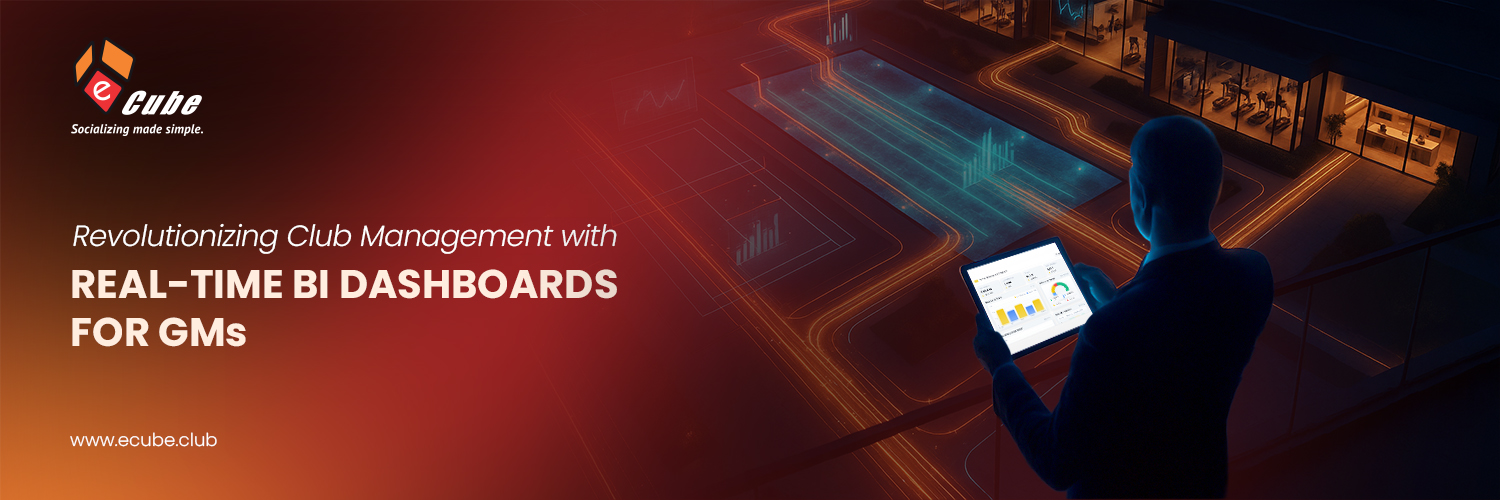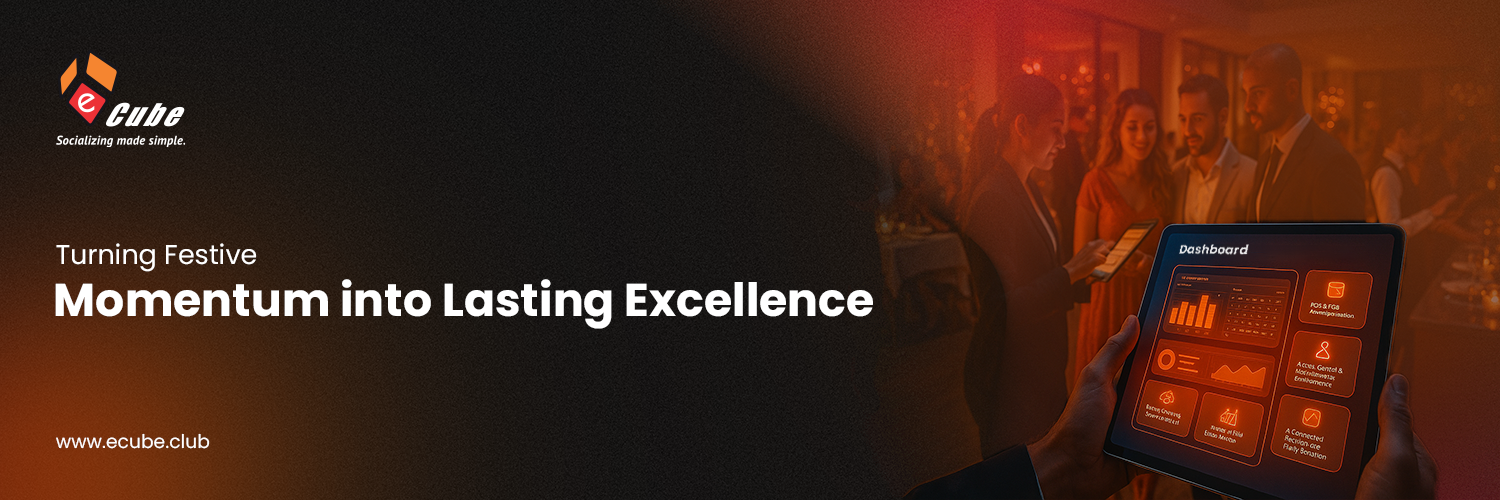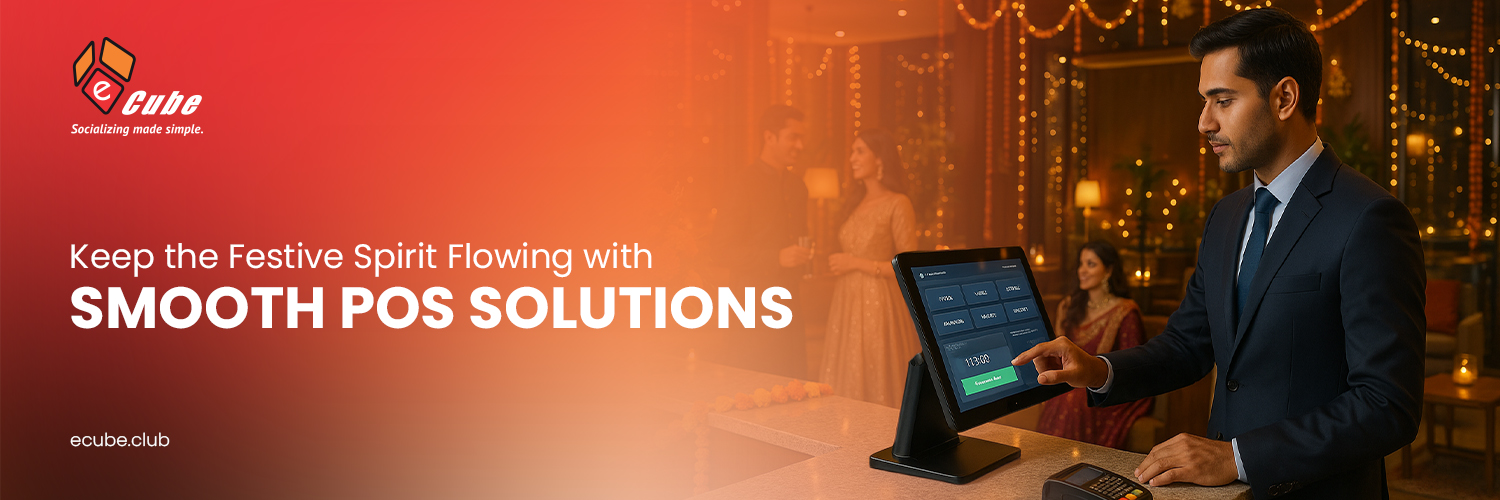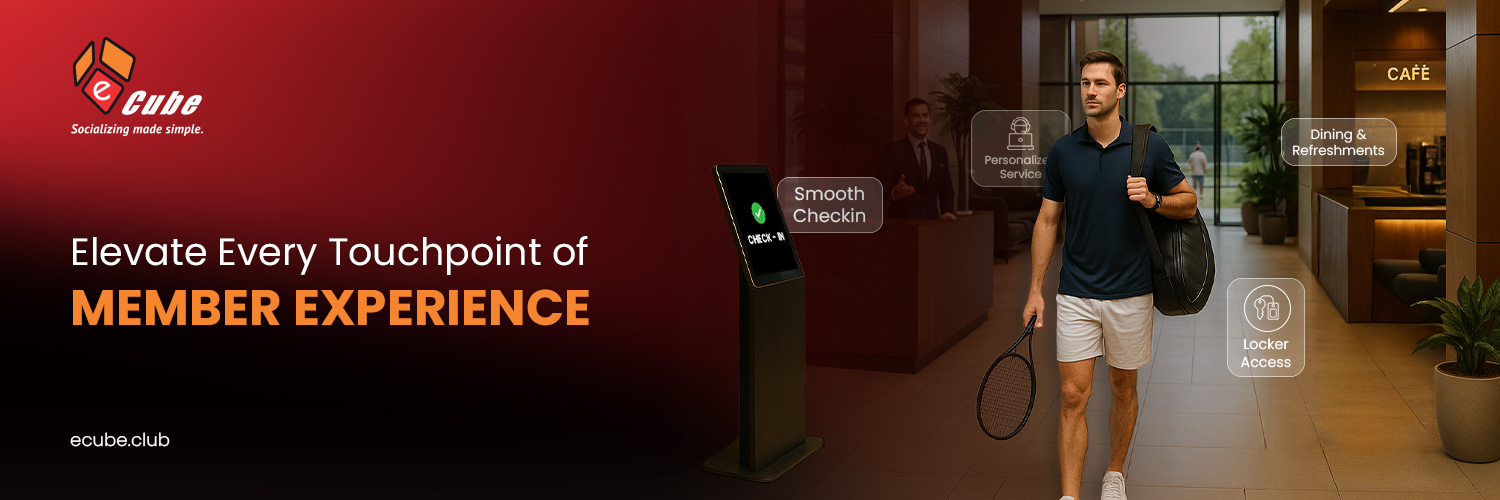Picture this: It's a lively Saturday night, and your club's restaurant is buzzing. Families are moving between the pool and the dining area, servers are darting around with handheld POS devices, and a birthday party is kicking off in the banquet hall. Through it all, the restaurant manager is right there on the floor, ensuring everything runs like clockwork.
Every tap-to-pay transaction, every QR order, every guest Wi-Fi login, and every member lookup interacts with systems connected to access control, reservations, billing, and inventory. During peak hours, the risk isn’t just long queues—it’s exposure to fraud, data leaks, or compliance lapses.
Club restaurants operate at the intersection of hospitality and fintech. Card-on-file payments, recurring dues, prepaid packages, banquet deposits, and refunds are all managed within one connected data environment. Front-of-house teams require speed, finance teams need clear audit trails, and IT teams demand zero trust, least privilege, and provable controls. A single misconfiguration—whether it’s a lost tablet, a shared password, or an unsecured connection—can open a path from the POS to the member database, and from there to payment gateways and sensitive personal data.
It’s no longer just about delivering excellent service; securing that service is equally vital. This calls for a well-defined cybersecurity strategy that covers everything from identity and data to payments, devices, vendors, and personnel.
This guide outlines a practical roadmap for club IT leaders and administrators—grounded in hospitality best practices, global standards, and real-world expectations.
The objective is simple:
- Keep member data safe
- Ensure payments are clean and secure
- Achieve all of this without slowing the Saturday dinner rush
The Real Risk Profile for Clubs
a. The complexity of Data Management
- Clubs manage a variety of sensitive data, including member information, photos, signatures, access logs, and payment transactions, all of which need to be securely handled.
- When systems like membership, POS, booking, and access control operate separately, data often gets duplicated, increasing the risk of exposure unless data minimization and tokenization measures are applied.
b. Cybersecurity as a Competitive Advantage
- Members expect a safe and seamless experience, whether booking online, paying bills, or enjoying personalized services.
- A club that invests in robust cybersecurity not only protects itself but also boosts its reputation as a trustworthy and secure establishment.
c. Employee Access and Insider Threats
- Employees, especially those with access to critical systems and databases, can be a source of risk, either through negligence or malicious intent.
- Proper training and strict access controls are necessary to minimize human error and insider threats.
d. Legacy Systems and Lack of Updates
- Many clubs still rely on outdated software and legacy systems that may not have the latest security patches, making them vulnerable to attacks.
- Regular updates and system audits are critical to closing security gaps in these older systems.
e. Complexity of Multi-Location Operations
- Clubs with multiple locations or branches face additional challenges in securing a unified system across all sites.
- Each location might have varying levels of cybersecurity measures, creating inconsistencies that cybercriminals can exploit.
A Control Framework That Works: Strategy Before Tools
Clubs benefit from a compact, repeatable set of controls rather than scattered security features. These should align with recognized frameworks like CIS Controls v8, PCI DSS 4.0, and ISO 27001.
a. Identity and Access
- Enforce Single Sign-On (SSO) and Multi-Factor Authentication (MFA) for all staff systems, including POS and admin consoles.
- Apply least privilege access based on department roles.
- Rotate service credentials and API keys regularly using managed secrets.
b. Data Protection
- Minimize sensitive data at the source—don’t store full card details or unnecessary IDs.
- Use tokenization for payment methods.
- Encrypt all data in transit (TLS 1.2+) and at rest with secure key management.
- Segregate member PII from operational data to limit breach impact.
c. Device and Application Security
- Enroll all POS tablets and kiosks in Mobile Device Management (MDM).
- Restrict devices to approved apps, enforce screen locks, and enable remote wipe.
- Apply vendor-signed firmware updates on a rolling schedule.
d. Network and Edge
- Separate POS, admin, and guest networks using VLANs and firewalls.
- Implement zero-trust network access for remote vendor support.
- Continuously monitor traffic for unusual lateral movement.
e. Payments Compliance
- Segment card data environments and use P2PE-certified terminals.
- Reconcile transactions daily with automated checks for anomalies.
- Maintain compliance documentation aligned with PCI DSS.
f. Logging, Monitoring, and Response
- Centralize logs from POS, access systems, firewalls, and cloud apps.
- Set alerts for suspicious actions like privilege escalations or after-hours admin activity.
- Maintain and test an incident response plan tailored to live hospitality operations.
Data Lifecycle Discipline: From Onboarding to Exit
a. Onboarding
Collect only essential data. Validate IDs without retaining full scans indefinitely. Provide transparency and consent options for members.
b. Daily Operations
Define clear data retention timelines. Store logs and invoices securely with access restricted to authorized finance or legal personnel.
c. Membership Termination
Remove credentials, revoke tokens, and anonymize profiles upon termination while retaining statutory financial records.
Payment Security: Protecting Without Slowing Service
a. Tokenization First
Use gateway-side tokenization for all stored cards and recurring payments. Applications should never process raw card data. For deposits or advances, issue tokenized payment links.
b. Strong Customer Authentication
Enable bank-grade authentication for member portals, especially during sensitive actions such as refunds or statement downloads.
c. Refunds with Dual Control
Introduce a maker-checker process for refunds and adjustments. Every high-value refund should have two-step approval and an audit trail synced to the general ledger.
d. Chargeback Intelligence
Monitor chargeback patterns—duplicate handheld charges, no-show disputes, or incorrect credits—and refine processes accordingly.
Vendor and Integration Governance
Clubs often depend on multiple vendors—membership systems, POS, access control, and accounting tools. To reduce risk, evaluate partners for:
- Independent security audits and compliance reports
- Secure development and patch management
- Support for SSO, MFA, and SCIM user provisioning
- API and webhook security with signed requests
- PCI DSS alignment for any payment-facing modules
The most secure clubs demand transparency from their vendors—clear statements on encryption, access control, and auditability.
Global Best Practices Clubs Can Adopt Now
- Adopt Zero Trust: Assume breach, verify every request, and isolate systems.
- Encrypt and Rotate Keys: Treat key management as a routine, not a project.
- Standardize Device Baselines: Maintain hardened, up-to-date configurations.
- Build Staff Awareness: Run quarterly phishing simulations and real-life security drills.
- Automate Reconciliation: Match POS and gateway transactions daily.
- Run Privacy by Design: Offer self-service options for members to view and manage their data.
October Cybersecurity Awareness Month: Make It Operational
Use October as a checkpoint to establish a year-round cybersecurity rhythm:
Quarterly:
- Conduct access reviews and patch audits.
- Run a simulated breach during peak service hours.
Monthly:
- Reconcile user access with HR records.
- Review privileged activity logs.
Weekly:
- Test database backups.
- Scan the external attack surface for misconfigurations.
- Refresh staff briefings on new phishing threats.
Metrics That Prove Security Without Slowing Service
- Mean time to patch critical vulnerabilities
- Percentage of devices compliant with MDM policies
- Rate of failed MFA attempts
- Refunds requiring dual control
- Time to detect and contain simulated incidents
- Privacy request completion time
Implementation Steps That Fit Club Reality
a. Start with Identity — Roll out SSO, MFA, and user-level access for POS and admin systems.
b. Segment the Network — Create distinct lanes for guest Wi-Fi, POS, and back office.
c. Tokenize Payments — Ensure all stored cards are tokenized via certified gateways.
d. Centralize Logs — Aggregate data into a basic SIEM with high-priority alerts.
e. Prepare the Floor — Document refund, lost-device, and access recovery procedures.
What to Ask Platform Providers
- Do your integrations (RFID, biometrics, locks, turnstiles) use secure protocols and signed firmware?
- Can you segregate member PII from operational data with field-level encryption?
- Do your mobile apps enforce session management and device checks?
- How do you protect invoices, ledgers, and receipts at rest?
- Are role-based security dashboards available for finance and IT managers?
How eCube Helps Keep Member Data and Payments Safe
eCube combines operational efficiency with enterprise-grade security. The platform integrates POS, access control, and restaurant management with centralized billing, analytics, and mobile experiences.
Its hardware integrations cover biometrics, RFID, and turnstiles, while backend systems ensure role-based access, audit trails, and tokenized payments. With eCube, administrators gain real-time visibility across bookings, payments, and member activity—reducing blind spots and minimizing response time during incidents.
Across deployments, clubs report stronger control over entry and billing, secure data management, and confidence in compliance—all while maintaining the speed and service quality members expect.
Conclusion: Trust Is the Product
Members may come for the food, the facilities, or the events—but they stay because they trust the system that supports it all.
Security isn’t an add-on to hospitality. It’s the invisible foundation that keeps service flowing and members returning. By standardizing controls, enforcing data discipline, and partnering with platforms like eCube, clubs can protect both their reputation and their revenue—without slowing down what makes their spaces thrive.










